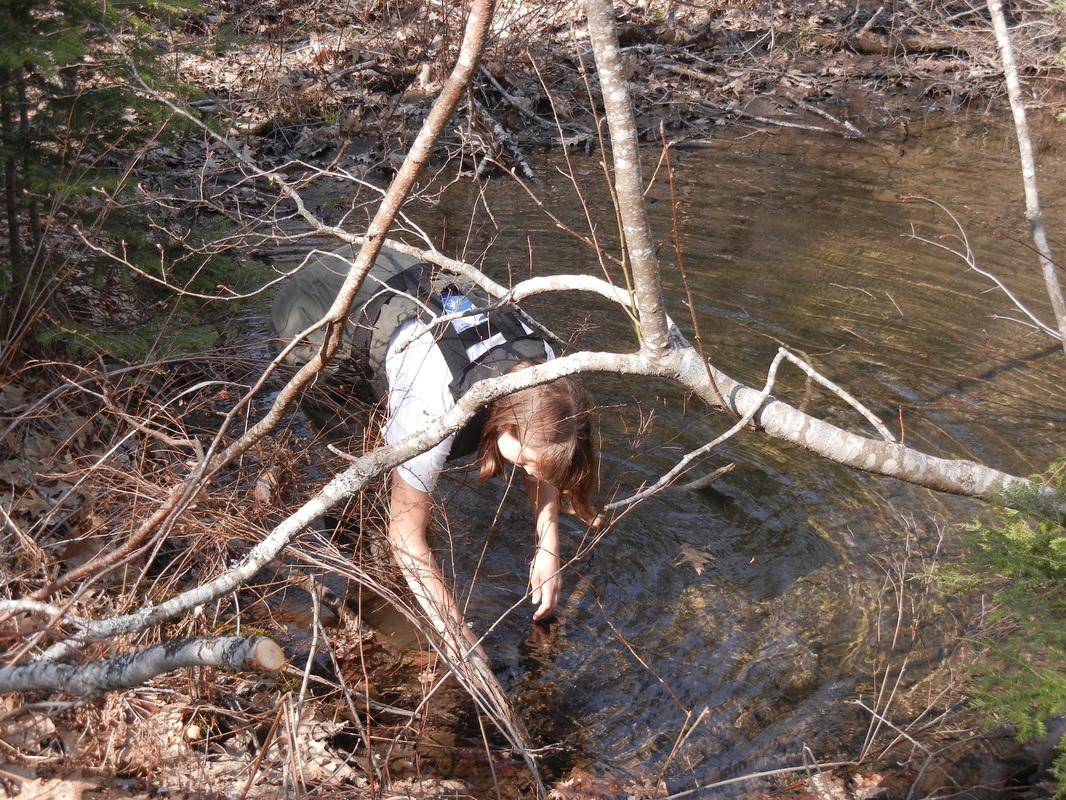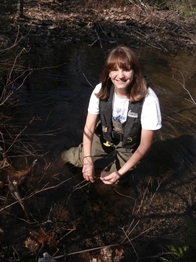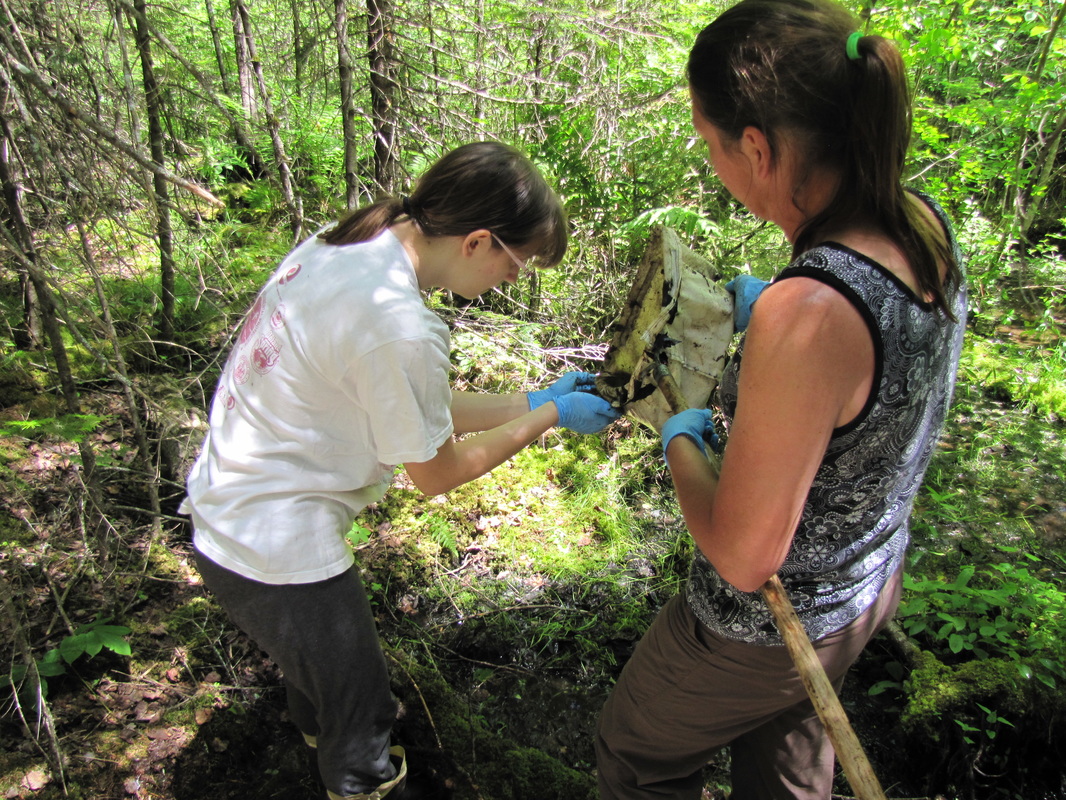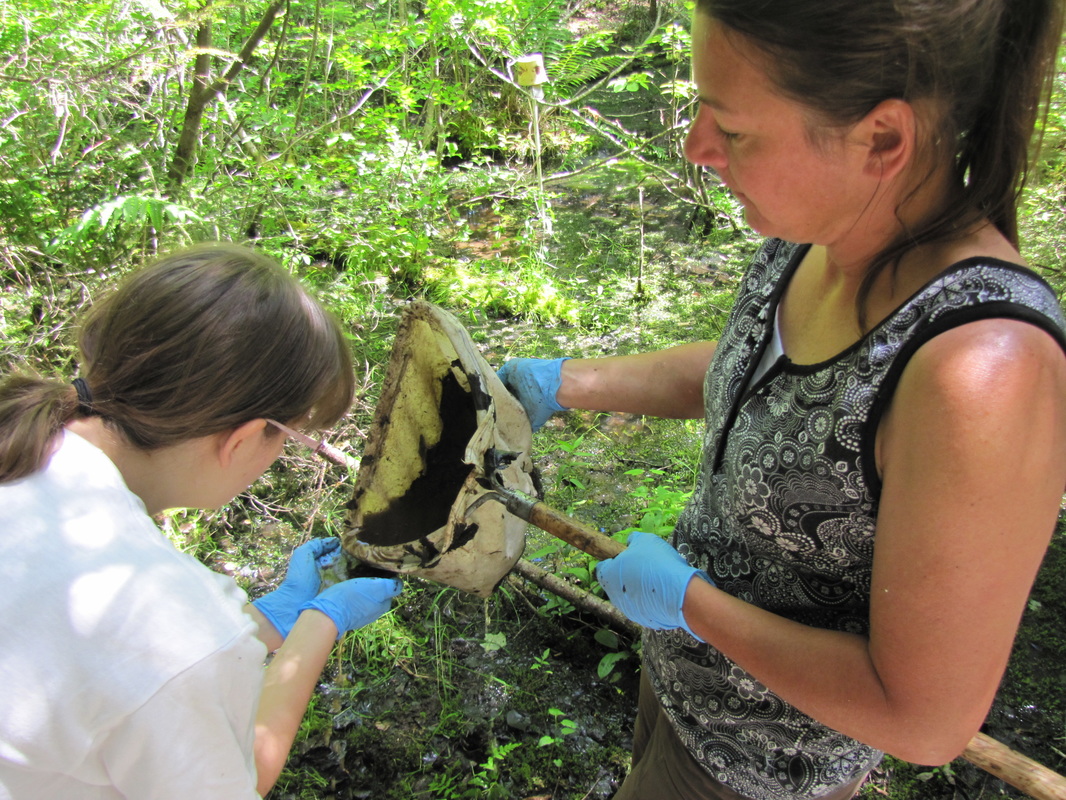Jessica Balukas, Graduate Researcher, University of Maine
The graduate students on the Of Pools and People Team are researching very different topics, ranging from amphibian movement and health to the conservation decisions of private landowners, but collaboration and coordination are necessary to accomplish the project objectives. We meet on a weekly or bi-weekly basis to share ideas, receive feedback from the group, and create summer field work plans. Additionally, we help each other with data collection by recording information that could help other students with future site selection or by collecting samples that another student needs. For instance, Carly Eakin collects wood frog and spotted salamander eggs at her vernal pool sites for Jared Homola, who requires amphibian eggs from vernal pools located throughout the State of Maine to assess population genetics. We also share vernal pool research sites when possible, as finding appropriate sites on one’s own can be a very time-consuming process. I was able to use existing field sites for my own thesis research, saving myself the trouble of searching for new pools and obtaining access permission.
One of the best and most exciting forms of graduate student collaboration is field work assistance. Volunteering for a day of field work helps both graduate students involved. The project leader receives valuable field help that increases efficiency, potentially increasing the number of sites sampled and/or allowing the project leader to finish the day’s sampling tasks at a reasonable hour. The volunteer learns new sampling methods and gains a better understanding of the fellow graduate student’s research project.
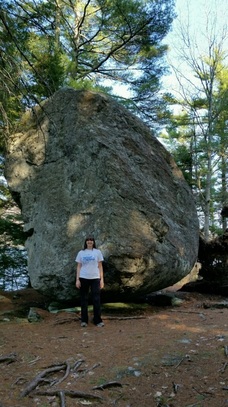 I recently had the opportunity to sample with Jared Homola, collecting wood frog and spotted salamander eggs in the greater Ellsworth region. Jared often samples sites that require walking for several miles because he does not want to abandon a site on which he spent valuable time gaining access permission, and he only has to sample each site one time. The first site we visited contained several small vernal pools along the edge of a dirt road. This was my first experience searching for wood frog and salamander egg masses, and I was surprised by the camouflaged nature of the spotted salamander eggs. After learning more about their appearance and expected locations, I was able to find them hiding amongst the debris. Jared demonstrated how he collected one egg from each egg mass, aiming for thirty eggs of each species. While he did the collecting, I searched for additional egg masses throughout the pool. We sampled four sites that day, including the deepest, coldest vernal pool I’ve ever seen. We also had the pleasure of viewing an impressive glacial monument known as “Balance Rock.” I enjoyed learning more about Jared’s work and amphibian breeding strategies, all while spending the day outside in the beautiful spring weather along the Maine coast.
I recently had the opportunity to sample with Jared Homola, collecting wood frog and spotted salamander eggs in the greater Ellsworth region. Jared often samples sites that require walking for several miles because he does not want to abandon a site on which he spent valuable time gaining access permission, and he only has to sample each site one time. The first site we visited contained several small vernal pools along the edge of a dirt road. This was my first experience searching for wood frog and salamander egg masses, and I was surprised by the camouflaged nature of the spotted salamander eggs. After learning more about their appearance and expected locations, I was able to find them hiding amongst the debris. Jared demonstrated how he collected one egg from each egg mass, aiming for thirty eggs of each species. While he did the collecting, I searched for additional egg masses throughout the pool. We sampled four sites that day, including the deepest, coldest vernal pool I’ve ever seen. We also had the pleasure of viewing an impressive glacial monument known as “Balance Rock.” I enjoyed learning more about Jared’s work and amphibian breeding strategies, all while spending the day outside in the beautiful spring weather along the Maine coast.
Last year, I had the chance to volunteer for Carly Eakin, whose work focuses on the population persistence and health of wood frogs and spotted salamanders. In addition to learning more about Carly’s research, I explored various vernal pool sites to assess their suitability for my own research. Before volunteering, I only had a vague idea of Carly’s research goals. I learned that most of her work involves capturing and inspecting wood frog and spotted salamander tadpoles, with health based on their size, signs of disease or other abnormalities, and level of predation. I also witnessed the amount of work required at each site, a process that becomes considerably more difficult in pools with fewer tadpoles. I helped by recording data and aiding the tadpole capturing effort. I enjoyed exploring several local vernal pools and learning about tadpole health metrics.
The feedback I’ve received from the Of Pools and People graduate students regarding my own thesis research has been invaluable. A group discussion can often provide the insight needed to overcome research obstacles, and fellow graduate students are particularly great at identifying common setbacks. Each graduate student provides a different area of expertise to the group, allowing us to tackle our research questions and potential hindrances far better than we could on our own. Working together on a regular basis also allows us to place our research within the context of the larger grant, ensuring that our combined efforts meet the research team’s goals. In summary, our collaborations strengthen our individual projects and the team’s research as a whole.

